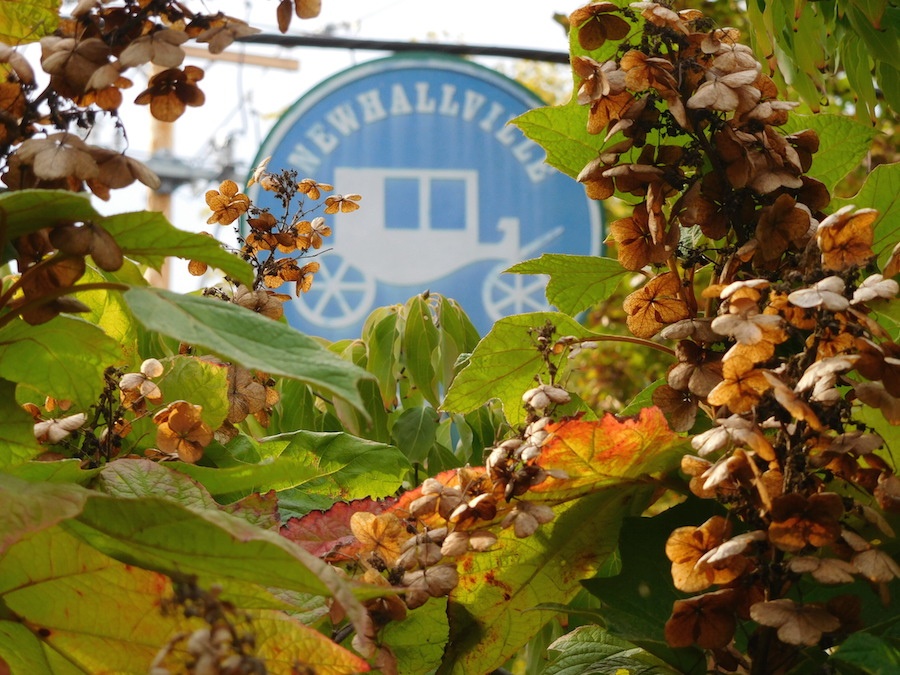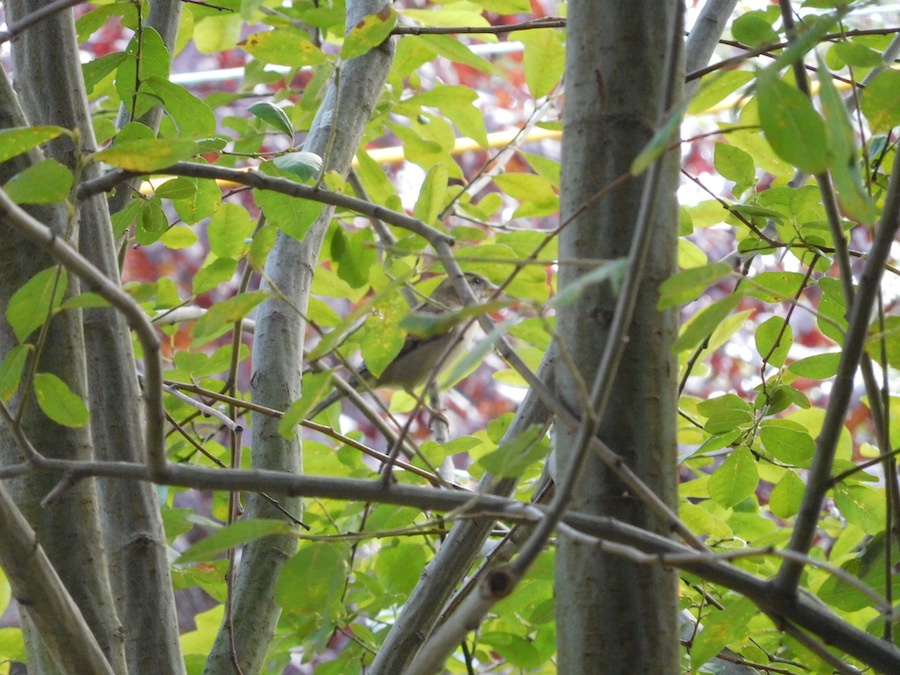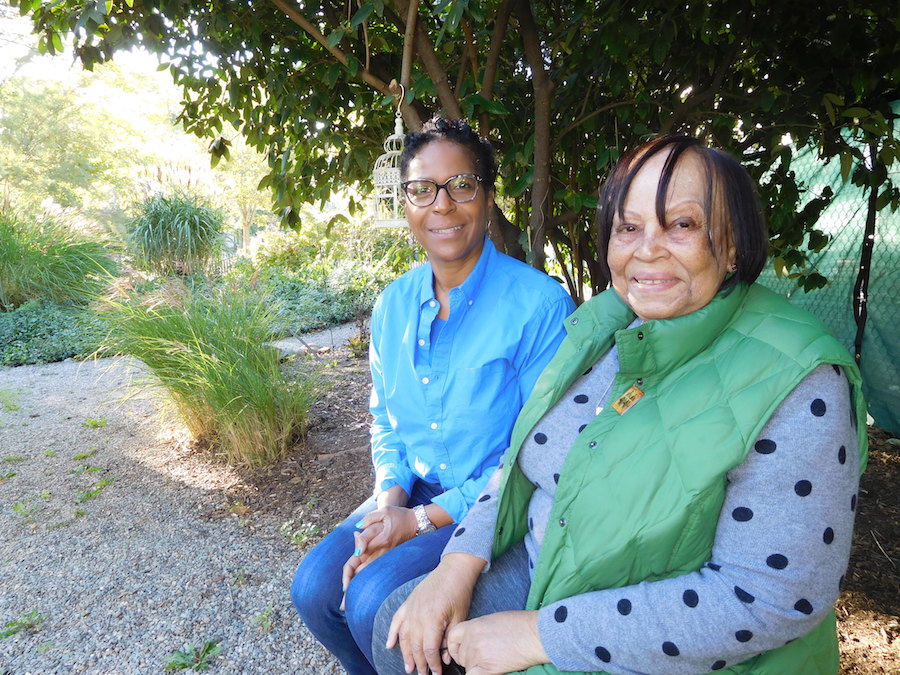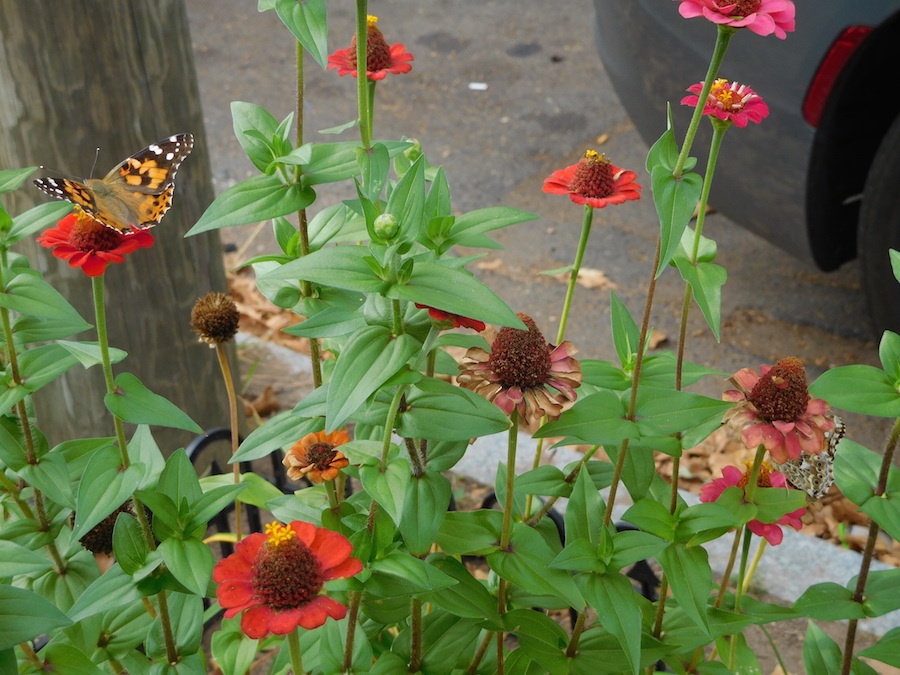
Leah Andelsmith Photo.
Come on a trip with me. A pilgrimage through Newhallville, that leads past turn-of-the-century homes to the Ivy Narrow Bird Sanctuary. Through a part of the city that has become, during my years in New Haven, very dear to my heart.
Today—it is still fall as I write this—I am visiting sites of urban renewal, gems in the cultural fabric of New Haven. Green oases dot my route: Shepard Street Greenspace, a narrow site with foliage so dense I can’t see the street. Starr Street Community Farm, in which collard greens, okra, and marigolds flourish. Farmington Canal Heritage Trail, where a group of student joggers smile and say hello.
Yale’s Urban Resources Initiative (URI), a program through the Yale School of Forestry and Environmental Studies, sponsors many of these sites around New Haven. As URI director Colleen Murphy-Dunning puts it, “a city’s landscape is ever-changing;” the goal is to support the current needs of the community by designing landscapes for long-term eco-sustainability. Since URI’s inception in 1995, the Community Foundation of Greater New Haven and the City of New Haven have provided one third of its funding. The rest comes from private donations. When residents want to improve a park, vacant lot, or streetscape, they can apply to URI’s Community Greenspace Program for funding and support.

Between my planned stops, I find vitality and connection on every block: well-tended yards and houses decorated for the fall; parents chatting as they wait for the school bus; folks listening to music on their porches; neighbors catching up. On West Ivy Street the houses are close, like friends sitting shoulder to shoulder at a dinner table. One neighbor has planted a butterfly garden and I stand inches away to observe. It is the first time I have actually seen a butterfly’s long proboscis unfurl into a flower. I guess city butterflies don’t shy so easily.
It is wonderful to be on foot. I could have driven to Ivy Narrow, at the corner of Ivy and Dixwell, or taken the 238 bus, which stops right in front of the sanctuary. But the slow pace lets me appreciate the journey, taking in details that would blur past my car. Driving through I get the Cliff’s Notes version; walking through is actually reading the book. It’s a way to connect with the city at the touch level, and open up the possibility for change.
When I step inside Ivy Narrow Bird Sanctuary, I am transported. The air smells fresher. The curving gravel paths make the space feel grand. Birds sound the alarm as I walk by their perch, disturbing their peace. The pond is filled with lily pads and bright orange goldfish. Bees are busy in the boughs of the trees. The sound of the leaves rustling in the wind seems louder than the traffic. I reach for my cell phone to turn it off. A lovely stone bench invites me to sit down. I accept.
According to Jeannette Thomas, caretaker of Ivy Narrow, the lot had very humble beginnings. Seventeen years ago, it “was like a cesspool. There was nothing out here but garbage.”

It was atrocious,” added her daughter, Jacqueline Buster.
Fed up with the eyesore, Thomas and a small group of devoted neighbors pitched in to clean up. Initially their efforts encountered resistance from the city. Then they turned to URI.
In the first year, Ivy Narrow regularly attracted a large group of volunteers. “Even people walking down the street in their dress clothes would stop, take off their jackets and start digging,” Thomas recalled in a recent interview, seated out in the sanctuary. Community interest waned in the following years—“a huge concern and challenge” for community greenspaces, said Murphy-Dunning.
But Ivy Narrow took root in Thomas’ family, not unlike the surrounding homes that are passed down through generations. Buster stayed on to tend it with her mother, looking after the plants.
“When we look out of the window, we see so much growth,” she said. “It’s unbelievable how the place has matured.”
These days, Ivy Narrow is what URI calls an “Emeritus” site. The major planting and landscaping are finished, but the site still needs ongoing maintenance and support. Both URI and Neighborhood Housing Services regularly send volunteers. This fills a need on both sides: volunteer groups need a one-day project; Thomas needs labor for large tasks like pruning, weeding, and mulching.
It fills deeper needs for connection and understanding as well. Students who volunteer at Ivy Narrow sometimes comment that Newhallville, often designated an “off-limits” neighborhood, is actually fine. They never encounter any trouble. Thomas tells them, “You are exposed to something that other students aren’t and it gives you a different view.”

“My family goes back nearly 300 years in New Haven,” she added. “I’m not afraid of any places in this city.” Thomas said she feels safe in the neighborhood, and that for the family, creating a place of beauty within Newhallville is important.
As I sit still and quiet in the sanctuary, one bird returns to the tree near my bench. Perhaps I’m not so big a threat anymore. I’m certainly not the disruption I was earlier, crashing about in wonder and delight. I take the first calm, full breath I’ve taken in days. I made this pilgrimage seeking sites of urban renewal; I didn’t expect that I would be renewed. A bird sings. Its unfamiliar call slides up in pitch, like asking an open-ended question.
“How does having a beautiful space affect property values? Or the feeling that your community is valued?” Murphy-Dunning asked aloud in a recent interview. “Beauty should not be underrated when it comes to well-being and community identity.”
Asked how important it is to have beauty in their own lives, Buster replied, “Extremely.”
“More than you really know,” Thomas added. Visitors to Ivy Narrow are drawn to return to its beauty again and again and to take care of it.
“They become enamored of the place,” Buster said. “They want to appreciate it.”
The entire place, to me, is a work of art, but when I ask if she considers herself an artist in an interview, Buster resists. The family didn’t have a master plan, she said—“things just happened.” And yet the plants and landscaping appear curated and composed, creating an immersive experience, like entering an Impressionist painting. Thomas created berms on the previously flat lot, “so that when your eye comes in, it has a place to go.” By the time I head out, she sounds like an artist to me.
Sites like Ivy Narrow Bird Sanctuary are visual signs of people caring about a community, using the blank canvas of a vacant lot to achieve a vision, make change, and evoke emotion. Before I left, I asked what feelings the family hopes to inspire in visitors to Ivy Narrow.
“I want them to feel what we feel, which is that it feels like home,” Buster said. “It feels secure. It’s beautiful. There is a sense of magic.”
She paused to smile broadly before finishing, “And so far that hasn’t failed.”